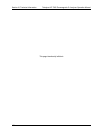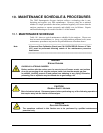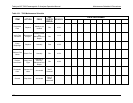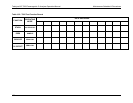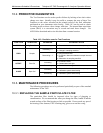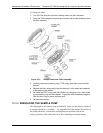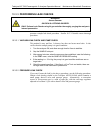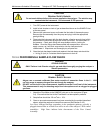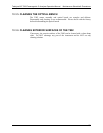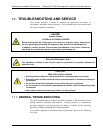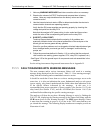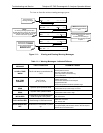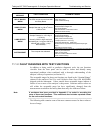
Maintenance Schedule & Procedures Teledyne API T802 Paramagnetic O
2
Analyzer Operation Manual
192
CAUTION
GENERAL SAFETY HAZARD
Do not use bubble solution with vacuum applied to the analyzer. The solution may
contaminate the instrument. Do not exceed 15 PSI pressure.
1. Turn OFF power to the instrument.
2. Install a leak checker or tank of gas as described above on the SAMPLE inlet
at the rear panel.
3. Remove the instrument cover and locate the inlet side of the sample pump.
Remove the flow assembly from the pump and plug it with the appropriate
gas-tight fitting.
4. Pressurize the instrument with the leak checker, allowing enough time to fully
pressurize the instrument through the critical flow orifice. Do not exceed 15
psi pressure. Check each fitting with soap bubble solution, looking for
bubbles. Once the fittings have been wetted with soap solution, do not re-
apply vacuum, as it will suck soap solution into the instrument and
contaminate it. Wipe down and thoroughly dry all parts first.
5. Once the leak has been located and repaired, the leak-down rate should be
< 1 in-Hg (0.4 psi) in 5 minutes after the pressure is shut off.
10.3.4. PERFORMING A SAMPLE FLOW CHECK
HAZARD
STRONG OXIDIZER
ONLY Perform Leak Checks using N
2
gas and after thoroughly purging the analyzer’s
internal pneumatics.
CAUTION
GENERAL SAFETY HAZARD
Always use a separate calibrated flow meter capable of measuring flows in the 0 – 1000
cm
3
/min range to measure the gas flow rate though the analyzer.
DO NOT use the built in flow measurement viewable from the Front Panel of the instrument.
This measurement is only for detecting major flow interruptions such as clogged or plugged
gas lines.
1. Attach the Flow Meter to the SAMPLE inlet port on the rear panel (Figure
3-4). Ensure that the inlet to the Flow Meter is at atmospheric pressure.
2. Sample flow should be 120 cm
3
/min 10%.
3. Once an accurate measurement has been recorded by the method described
above, adjust the analyzer’s internal flow sensors (See Section 9.4.2).
Low flows indicate blockage somewhere in the pneumatic pathway, typically a
plugged sintered filter or critical flow orifice in one of the analyzer’s flow control
assemblies. High flows indicate leaks downstream of the Flow Control
Assembly.
07275B DCN6418



